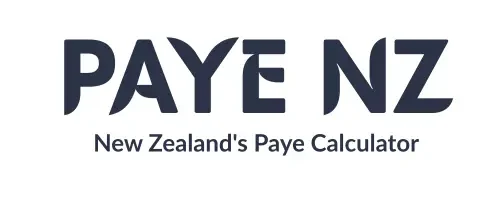Common PAYE Mistakes and How to Avoid Them in New Zealand
Pay As You Earn (PAYE) is a cornerstone of New Zealand’s tax system, designed to collect income tax and Accident Compensation Corporation (ACC) levies directly from employees’ w Common PAYE Mistakes and How to Avoid Them

Below are the seven most common PAYE mistakes in New Zealand, with explanations, consequences, and solutions for employers and employees.
Mistake 1: Incorrect Tax Codes
Explanation: Tax codes determine the tax rate applied to an employee’s wages. Errors, such as using “M” instead of “S” for secondary income, lead to incorrect deductions.
Consequences: Over-deduction reduces employees’ take-home pay, while under-deduction results in tax debts. Employers may face penalties for non-compliance.
Solutions:
- Employers: Verify tax codes via Inland Revenue’s myIR or request updates when employees’ circumstances change (e.g., new income sources).
- Employees: Check tax codes on payslips or myIR and notify employers of changes, such as marriage or additional jobs.
Example: An employee with a secondary job needs an “S” tax code to account for higher tax rates, which employers must confirm to avoid errors.
Mistake 2: Missed Filing Deadlines
Explanation: Employers must file PAYE returns by specific deadlines, based on filing frequency (monthly or twice-monthly). Missing these disrupts compliance.
Consequences: Late filings incur penalties, interest charges, and administrative burdens from Inland Revenue.
Solutions:
- Employers: Determine filing frequency based on annual PAYE deductions (less than $500,000: monthly; more than $500,000: twice-monthly). Use payroll software or reminders to meet deadlines (Afirmo NZ).
- Employees: Encourage employer compliance, though not directly responsible.
Table: PAYE Filing Deadlines
| Filing Frequency | Annual PAYE Threshold | Deadlines |
|---|---|---|
| Monthly | Less than $500,000 | By the 20th of the following month |
| Twice-Monthly | More than $500,000 | 1st-15th: By the 20th; 16th-end: By the 5th (except Dec 2nd period: Jan 15th) |
Mistake 3: Late PAYE Deduction Payments
Explanation: Employers must pay deducted PAYE amounts to Inland Revenue alongside filings. Payment delays are treated separately from filing errors.
Consequences: Late payments result in interest charges, penalties, and potential legal action.
Solutions:
- Employers: Schedule payments through myIR or payroll software to align with deadlines. Notify Inland Revenue if no wages are paid in a period to avoid penalties.
- Employees: Report concerns if deductions seem mismanaged, though this is primarily an employer responsibility.
Mistake 4: Calculation Errors
Explanation: Errors in calculating PAYE, particularly for holiday pay, bonuses, or irregular income, are common due to complex rules.
Consequences: Underpayments lead to debts owed to Inland Revenue, while overpayments reduce employees’ take-home pay.
Solutions:
- Employers: Use Inland Revenue’s PAYE calculator or payroll software to verify calculations. Reconcile deductions regularly.
- Employees: Review payslips to ensure deductions match expected tax liabilities.
Mistake 5: Filing Frequency Errors
Explanation: Employers may file too frequently or infrequently based on their annual PAYE deductions, leading to compliance issues.
Consequences: Incorrect frequency causes missed deadlines or unnecessary administrative work.
Solutions:
- Employers: Check annual PAYE deductions to confirm monthly or twice-monthly filing. Update frequency as the business grows.
- Employees: Not directly responsible but can be aware of employer obligations.
Mistake 6: Not Correcting Mistakes Promptly
Explanation: Failing to correct PAYE errors, such as wrong tax codes or miscalculations, quickly exacerbates issues.
Consequences: Delayed corrections lead to compounded errors, larger penalties, or disputes with Inland Revenue.
Solutions:
- Employers: Correct errors using the same filing method (online or paper) or contact Inland Revenue for assistance (Business.govt.nz).
- Employees: Notify employers immediately if errors appear on payslips.
Mistake 7: Over-deducting or Under-deducting
Explanation: Deducting too much or too little tax often results from incorrect tax codes, calculation errors, or outdated employee information.
Consequences: Over-deduction reduces employees’ pay, while under-deduction creates tax debts.
Solutions:
- Employers: Regularly review tax codes and calculations. Use payroll software for accuracy.
- Employees: Monitor payslips and use myIR to check tax summaries.
Tools and Resources
To prevent PAYE mistakes, leverage these tools and resources:
- Inland Revenue’s PAYE Calculator: Verify deductions (PAYE Calculator).
- myIR Online Service: File returns, correct errors, and manage tax codes (myIR).
- Payroll Software: Tools like MYOB, Xero, or Afirmo automate calculations and filings.
- Inland Revenue Support: Contact for specific issues via phone or online.
Best Practices for Employers and Employees
For Employers
- Training: Regularly train staff on PAYE obligations.
- Payroll Systems: Use reliable software to minimize errors.
- Record-Keeping: Keep employee records (tax codes, payment details) up to date.
- Reconciliation: Conduct regular PAYE reconciliations to catch errors early.
For Employees
- Verify Tax Codes: Check tax codes via myIR regularly.
- Update Information: Notify employers of changes affecting tax codes (e.g., address, income).
- Check Payslips: Ensure deductions are correct and report discrepancies.
Table: PAYE Filing Requirements
| Filing Frequency | Annual PAYE Threshold | Deadlines |
|---|---|---|
| Monthly | Less than $500,000 | By the 20th of the following month |
| Twice-Monthly | More than $500,000 | 1st-15th: By the 20th; 16th-end: By the 5th (except Dec 2nd period: Jan 15th) |
Conclusion
Avoiding PAYE mistakes in New Zealand is essential for financial accuracy, legal compliance, and maintaining trust between employers and employees. By understanding common errors like incorrect tax codes, missed deadlines, and calculation mistakes, and by using tools like Inland Revenue’s PAYE calculator and myIR, both employers and employees can ensure smooth PAYE processes. Implement the best practices outlined here and leverage the provided resources to stay compliant and stress-free. Share this guide with your team or colleagues to help New Zealand businesses and workers thrive.
